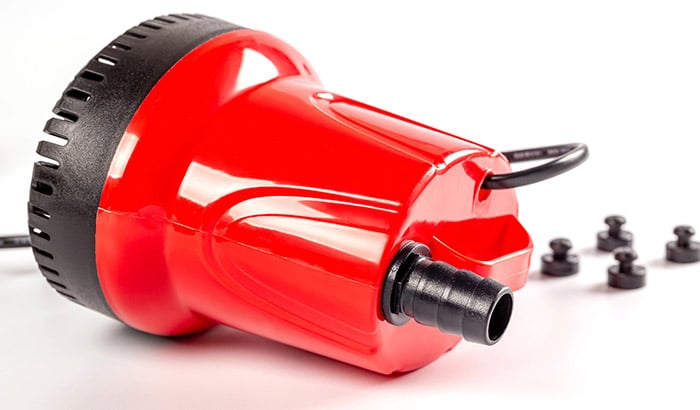Aquarium pumps are an essential piece of equipment for any fish tank. They circulate water and keep it oxygenated, ensuring that your fish and other aquatic creatures stay healthy. But how do aquarium pumps work?
In this article, we’ll look at the different types of aquarium pumps and break down their functions. We’ll also discuss some of the benefits of using an aquarium pump and tips on choosing the right pump for your tank.
So read on to learn more about aquarium pumps and how they can keep your fish tank healthy and thriving.
How do various types of aquarium pumps work?
Submersible pumps
Submersible pumps are designed to be placed directly in the water. Submersible pumps are the most common type of aquarium pump. They are easy to install and maintain and very effective at circulating water throughout the tank.
Many submersible pumps also come with built-in filters, making them great for tanks with lots of debris or sediment.
How do submersible aquarium pumps work?

There are a few ways that submersible aquarium pumps work. Still, the most common type of submersible pump uses an impeller to move water through a tube.
- The impeller is a small piece of metal with blades that spins when the pump is turned on.
- As the impeller spins, it creates a low-pressure area in the center of the pump.
- This low-pressure area sucks water from the aquarium and forces it through the pump and out into the tubing.
Submersible aquarium pumps are designed to be very efficient. They can move a lot of water in a short amount of time.
Most submersible aquarium pumps will have an adjustable flow rate, so you can customize the amount of water moved through the pump.
External pumps
External pumps are designed to be placed outside of the tank. External pumps are typically used in larger tanks or tanks with complex filtration systems.
They are less common than submersible pumps, but they offer some advantages over submersible pumps. External pumps are less likely to become clogged with debris, and they can be easier to repair if they do break down.
External pumps work by drawing water from the sump (a lower area of the aquarium where water is collected) and then pumping it through a filter and back into the main part of the aquarium.
Aeration pump
An aeration pump is an aquarium pump that adds oxygen to the water. Aeration pumps are often used in larger tanks or in tanks with fish that require high oxygen levels.
Aeration pumps work by drawing air from the atmosphere and then pushing it through a tube into the water. This action creates bubbles in the water, which increases the surface area of the water and allows more oxygen to dissolve into the water.
Power Filter Pumps
Power filter pumps combine filtration with water circulation. It is a type of aquarium pump that combines the functions of a submersible pump and an external filter.
Power filter pumps are designed to be placed inside the tank, and they are a great choice for tanks with limited space.
Power filter pumps are a popular choice for aquariums because they offer mechanical and biological filtration.
They work by drawing water from the bottom of the tank and then pushing it through a filter before returning it to the top of the tank. This action circulates the water throughout the tank and filters it, making sure that your fish have clean, oxygenated water to swim in.
Conclusion
Aquarium pumps are essential for any fish tank. They circulate water and keep it oxygenated, making sure that your fish and other aquatic creatures stay healthy. Depending on the size of your tank, filters installed inside, and other factors, you can choose a suitable one among the types mentioned above.
Hopefully, now you know how aquarium pumps work and how beneficial to have one for your tank.




